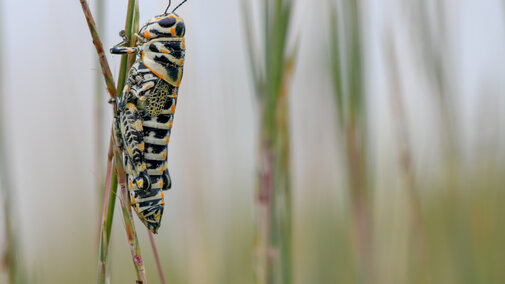Much of Nebraska has had several years of below-normal precipitation, which may allow grasshoppers to become a problem.
The 2023 Rangeland Grasshopper Hazard Map indicates 10 counties in Nebraska that had fall adult grasshopper numbers averaging over 15 per square yard. These data are based on the 2022 adult survey, which is a good indicator of possible grasshopper issues for the summer of 2023. Economic thresholds for grasshopper densities in rangeland vary from eight to 40 grasshoppers per square yard. The thresholds are influenced by several factors, including the cost of control product, projected forage yield, and the value of forage considered for treatment.
Grasshoppers consume up to 50% of their body weight every day in forage. A rate of just 2.7 grasshoppers per square yard equals 12,971 grasshoppers per acre. An acre with 69.7 grasshoppers per square yard equates to the consumption of forage by one cow per day.
Pasture grasshopper species that are most damaging are found in areas with less than 30 inches of annual rainfall. The western two-thirds of Nebraska fall into this rainfall category. With the occurrence of consecutive years of drought, grasshopper outbreaks are possible. The past several years, southwestern, south-central and western Nebraska have experienced below-normal precipitation. This type of weather pattern can play a large role in rangeland grasshopper outbreaks, and monitoring grasshopper numbers is important to figuring out what action may be required.
Continue this article on management strategies for grasshoppers, including tips on monitoring and control options, at BeefWatch.

